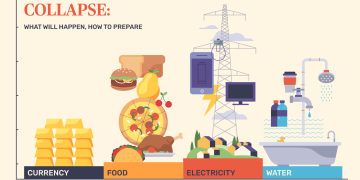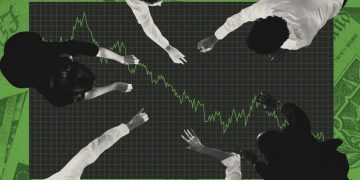Introduction
In recent years, Europe has experienced a positive shift in its labor markets, with a noticeable dip in unemployment rates across the continent. This trend, which has been especially prominent in the aftermath of the pandemic, raises an important question for investors, policymakers, and businesses alike: can the improved employment picture be sustained, and what does it mean for Europe’s broader economic future? This article takes a closer look at the factors contributing to lower unemployment rates in the Eurozone, how fiscal and monetary policies have supported job creation, and the sector-specific trends shaping Europe’s labor market. Finally, we explore what these developments mean for European market growth and investor confidence.
1. Analyzing the Recent Dip in Unemployment Rates Across Europe
Europe’s labor market has shown resilience despite the challenges posed by the pandemic, geopolitical tensions, and inflationary pressures. Recent data suggests a steady decline in unemployment rates across many European nations, signaling a recovery and transformation in the region’s workforce.
Unemployment in the Eurozone fell to record lows in 2023, with several member states reporting unemployment rates close to pre-pandemic levels. For example, countries such as Germany, the Netherlands, and France have seen unemployment drop to levels not seen in over a decade. The European Union’s overall unemployment rate has also decreased, signaling the strength of the recovery.
Key drivers of this positive trend include the reopening of economies, the rapid recovery of the services sector, and the increasing demand for workers in certain industries. However, the overall job market improvement has not been uniform across the continent, with some countries—particularly in Southern Europe—still facing relatively high levels of unemployment compared to the EU average.
Factors Driving the Dip in Unemployment Rates
Several factors have played a key role in driving down unemployment rates in Europe. Firstly, the accelerated digital transformation of many industries has created new job opportunities, particularly in technology, finance, and e-commerce. This has been particularly noticeable in countries like Germany, which has long been a leader in industrial innovation.
Secondly, there has been a strong rebound in consumer demand post-pandemic, particularly in service sectors like hospitality, tourism, and retail, which have historically been significant employers in the Eurozone. The re-opening of economies and increased mobility across borders have further fueled employment growth in these industries.
Thirdly, labor force participation rates have improved in some European countries, as more people—particularly older workers and women—are re-entering the workforce or staying employed longer. This shift has helped mitigate the impact of demographic changes, such as an aging population, which has long posed challenges for European labor markets.
2. The Role of Fiscal and Monetary Policies in Job Creation
Fiscal and monetary policies have played an instrumental role in creating favorable conditions for job creation across Europe. The European Central Bank (ECB) has kept interest rates at historically low levels to encourage investment and support economic activity, particularly in sectors sensitive to borrowing costs such as real estate and manufacturing. These policies have created an environment in which businesses are more likely to expand and hire workers, driving down unemployment.
Additionally, the European Union’s fiscal policies have focused on job creation through stimulus packages, public investment programs, and reforms aimed at boosting economic resilience. The NextGenerationEU recovery fund, which was created in response to the economic disruption caused by COVID-19, has allocated billions of euros to help member states recover, particularly in areas such as digitalization, green energy, and infrastructure development. These investments are expected to create long-term job growth, particularly in the green economy.
On a national level, individual European governments have also implemented policies to support employment. For instance, France’s “France Relance” plan and Germany’s support programs for industries hard-hit by the pandemic have successfully cushioned the blow to employment, providing financial support to businesses that retain workers during periods of economic disruption.
While these policies have been successful in reducing unemployment, they also raise questions about sustainability. As some of the emergency fiscal and monetary measures come to an end, the question remains whether European economies can maintain low unemployment rates without relying on heavy government intervention.

3. Sector-Specific Trends That Are Influencing Employment
Employment trends across Europe are being shaped by several sector-specific developments that are redefining the landscape of job creation. While many traditional industries have seen employment growth, certain sectors are driving much of the positive momentum.
Digital and Technology Sector
The digital economy continues to be a key driver of employment in Europe. As companies increasingly adopt digital solutions, they are hiring workers in IT, software development, cybersecurity, and data analysis. Startups and established firms alike are in search of skilled workers who can drive technological innovation.
Countries with robust tech ecosystems, such as Germany, Estonia, and the Netherlands, have seen significant growth in tech job opportunities. In addition, remote working trends—accelerated by the pandemic—have allowed workers to find employment in digital roles irrespective of geographical location, further boosting employment rates in the tech sector.
Green Energy and Sustainability
The EU’s commitment to becoming carbon-neutral by 2050 has created new opportunities in the renewable energy and sustainability sectors. As governments across the region invest in wind, solar, and hydrogen energy, new jobs are being created in these industries. In particular, countries such as Denmark, Spain, and the UK are seeing strong growth in green energy-related jobs, including installation, maintenance, and engineering roles.
Additionally, the EU’s Green Deal has spurred initiatives aimed at improving energy efficiency in construction, manufacturing, and transportation. These efforts are likely to drive job creation in green industries and promote the development of new sustainable business models.
Healthcare and Life Sciences
The pandemic highlighted the importance of the healthcare sector, and it remains a significant source of job creation in Europe. The aging population in many European countries has increased the demand for healthcare services, leading to job growth in healthcare, pharmaceuticals, and biotechnology. Countries like Germany, France, and Italy are investing heavily in healthcare infrastructure, creating new roles in nursing, medical research, and biotechnology.
Moreover, the COVID-19 pandemic led to rapid advances in the healthcare and life sciences sectors, driving demand for skilled workers in areas such as medical technology, diagnostics, and vaccine production.
4. What These Developments Mean for European Market Growth
The recent dip in unemployment rates across Europe is a positive sign for the region’s economic growth prospects. Lower unemployment generally leads to higher consumer spending, increased business activity, and improved confidence in the economy. As job markets strengthen, workers are able to spend more on goods and services, which in turn drives demand and supports broader economic expansion.
Moreover, the sectors leading employment growth—such as digital technology, green energy, and healthcare—are expected to play a pivotal role in shaping Europe’s economic future. The EU’s digital transformation and green transition agendas, combined with strong fiscal and monetary policies, could help sustain growth and maintain the positive trajectory in employment rates.
However, challenges remain. While unemployment has decreased in many parts of Europe, certain countries, particularly in Southern Europe and Eastern Europe, still face significant structural issues in their labor markets. These countries will need to continue focusing on reforms to reduce youth unemployment and improve the employability of their workforces.
Additionally, inflationary pressures, the threat of stagflation, and global geopolitical uncertainties could dampen growth prospects in the future. As such, investors should remain vigilant about potential risks to the European economy, particularly in sectors that are more sensitive to global supply chain disruptions or energy price fluctuations.
Conclusion
The recent decline in unemployment rates across Europe is a promising development for the region’s economic future. It signals not only recovery from the pandemic but also the potential for long-term growth in key sectors such as technology, green energy, and healthcare. Fiscal and monetary policies have been crucial in supporting job creation, and sector-specific trends show that Europe is positioning itself for a more sustainable and digitally driven economy.
However, challenges remain, and it is essential for governments, businesses, and investors to carefully monitor the evolving labor market dynamics. The key to sustaining this positive employment trend will lie in continued investments in innovation, education, and infrastructure, alongside policies that support inclusive and equitable growth across all member states.





























